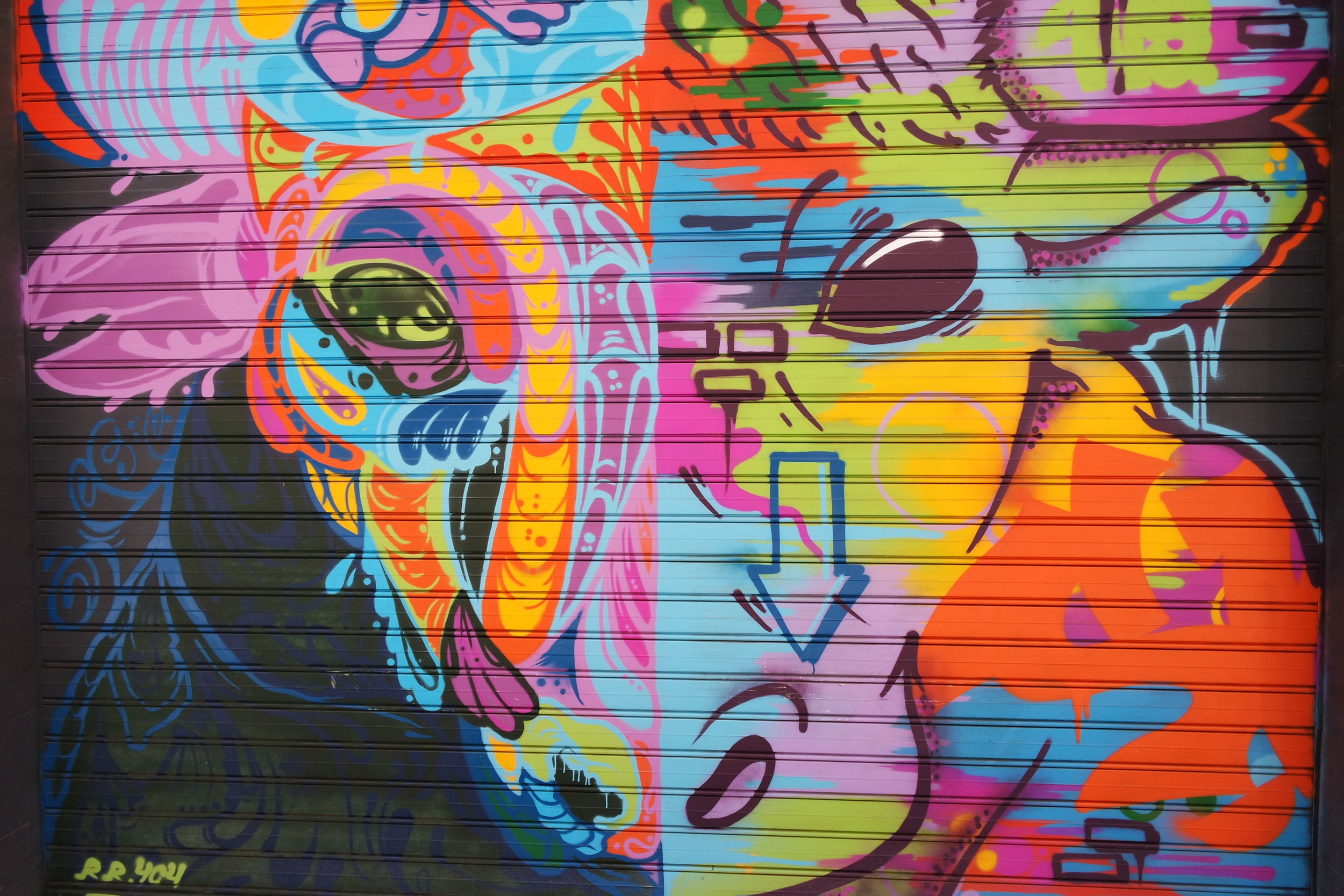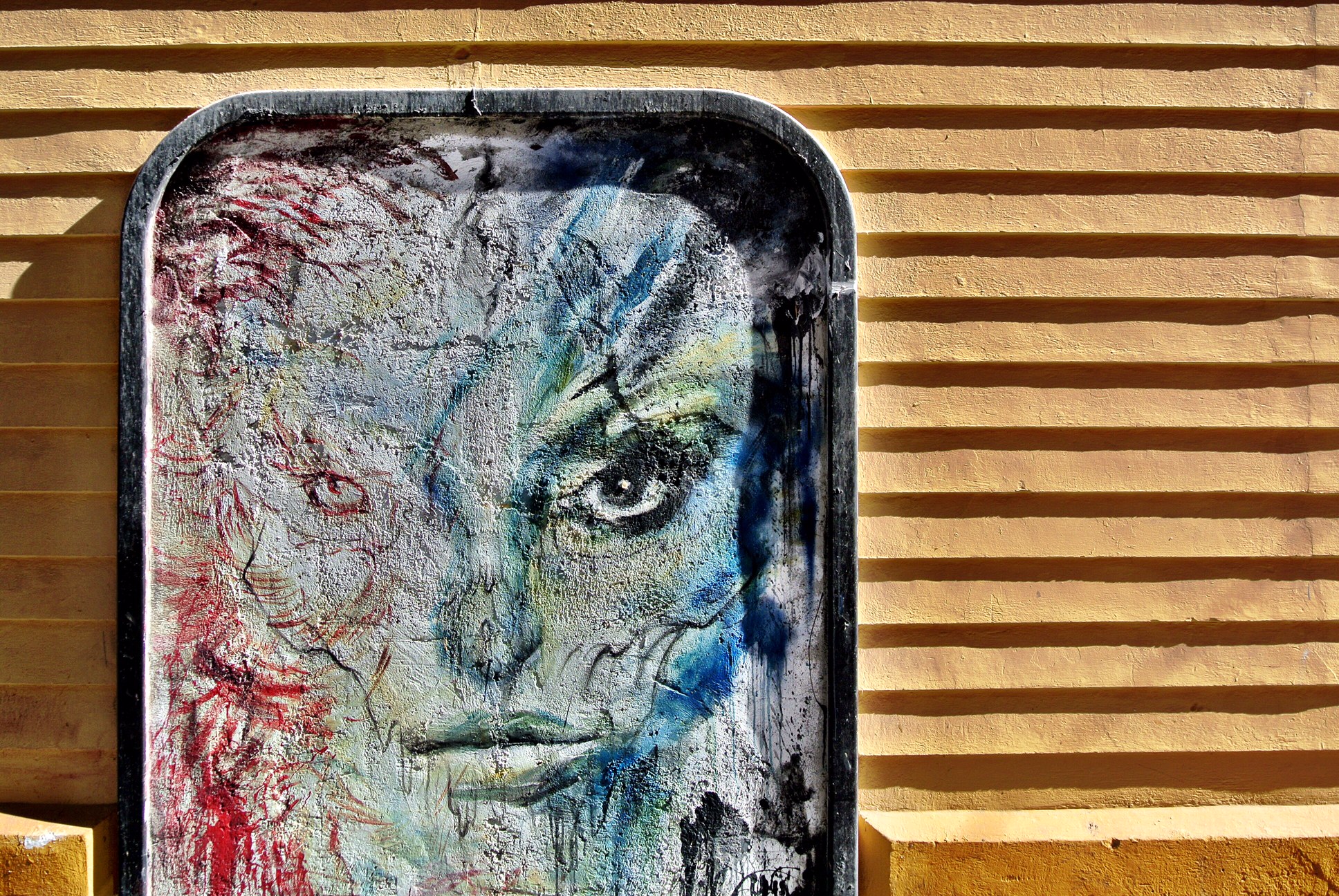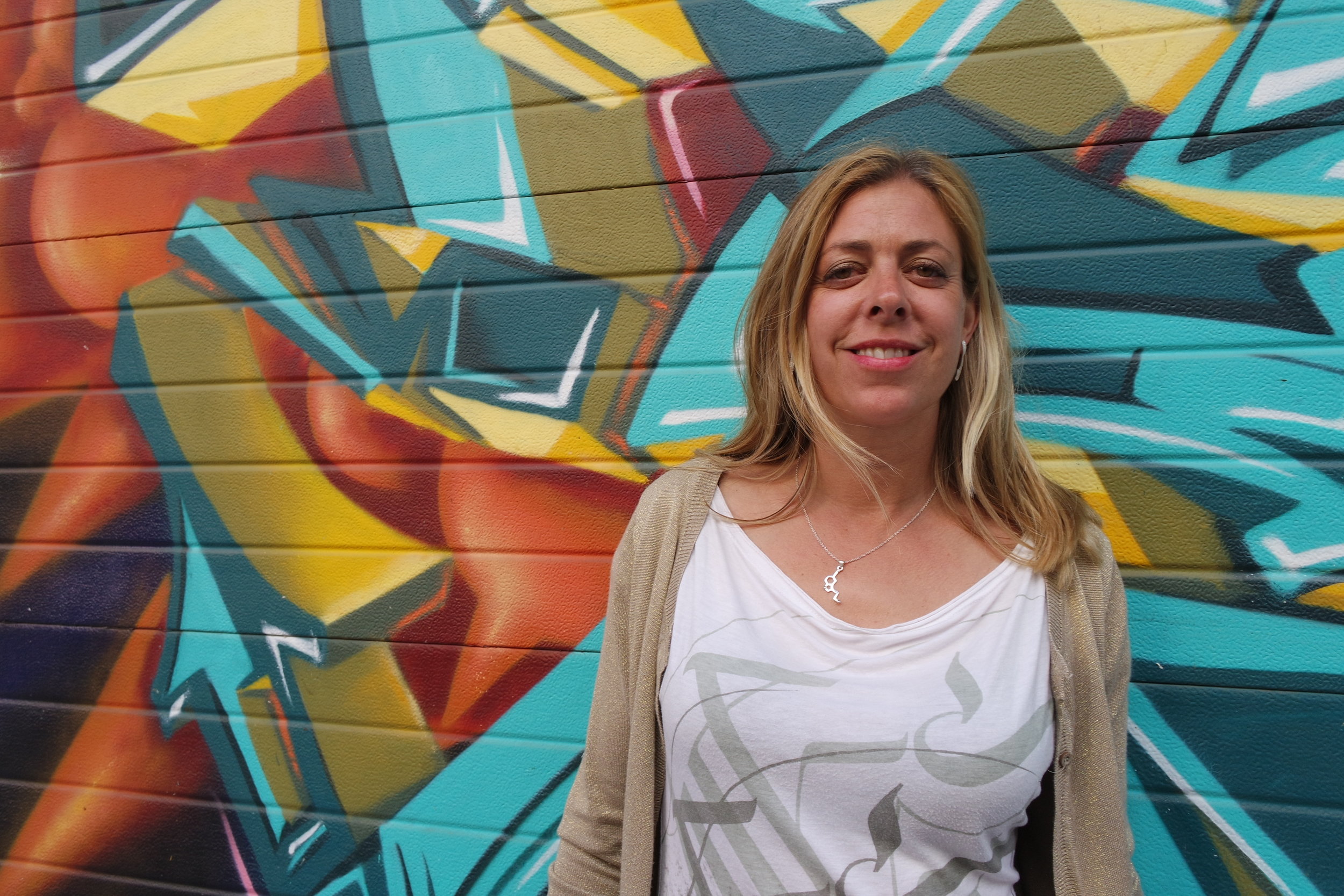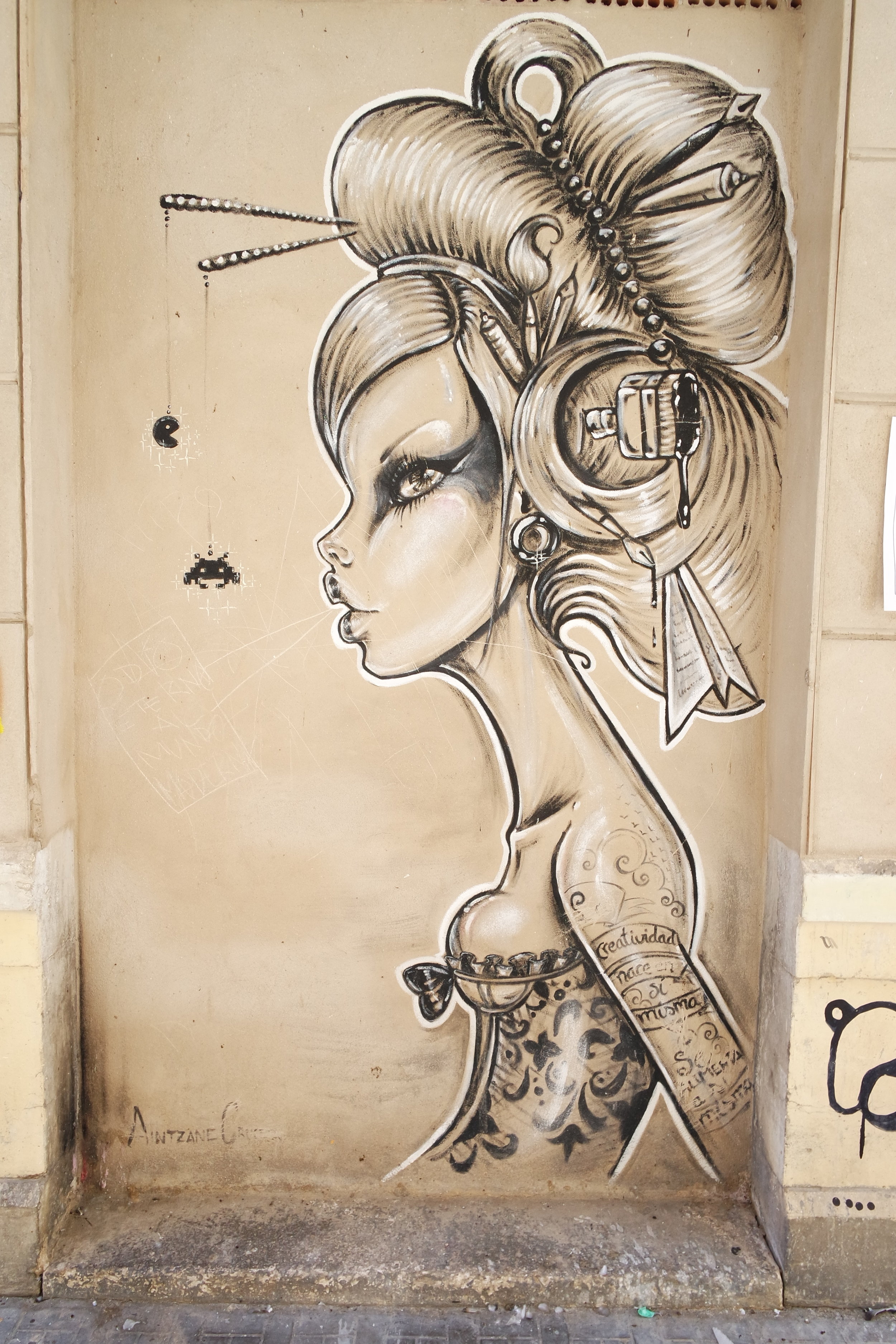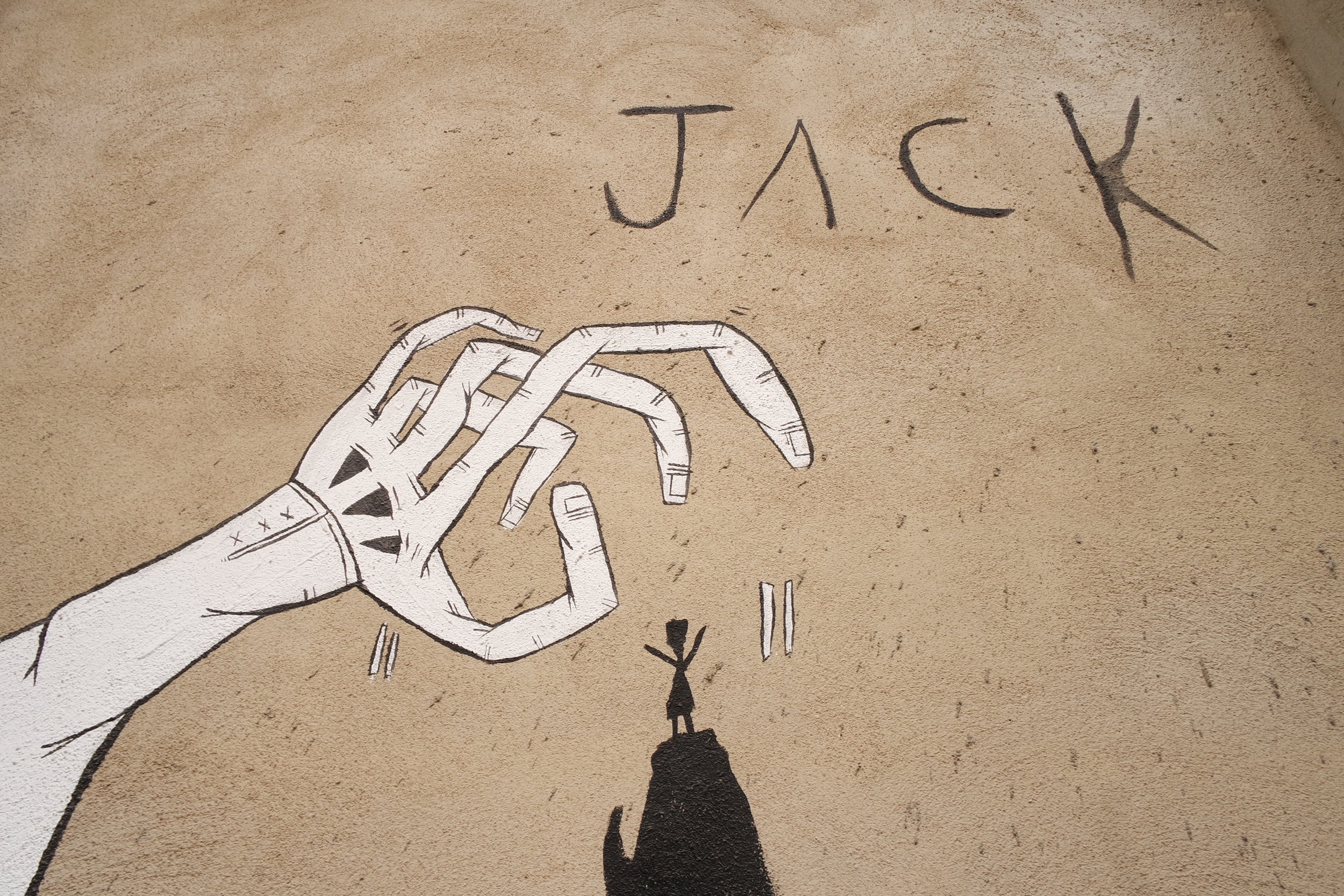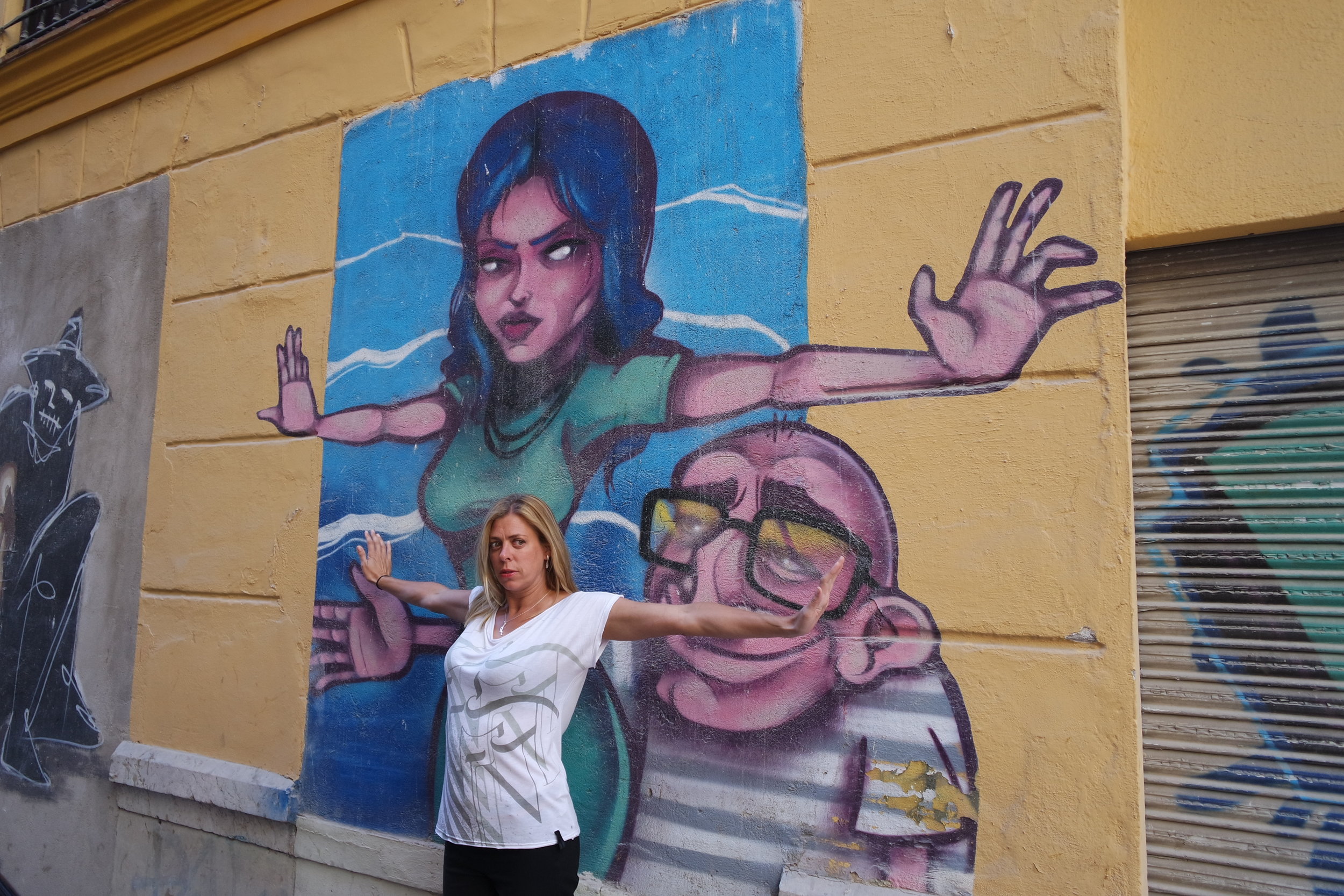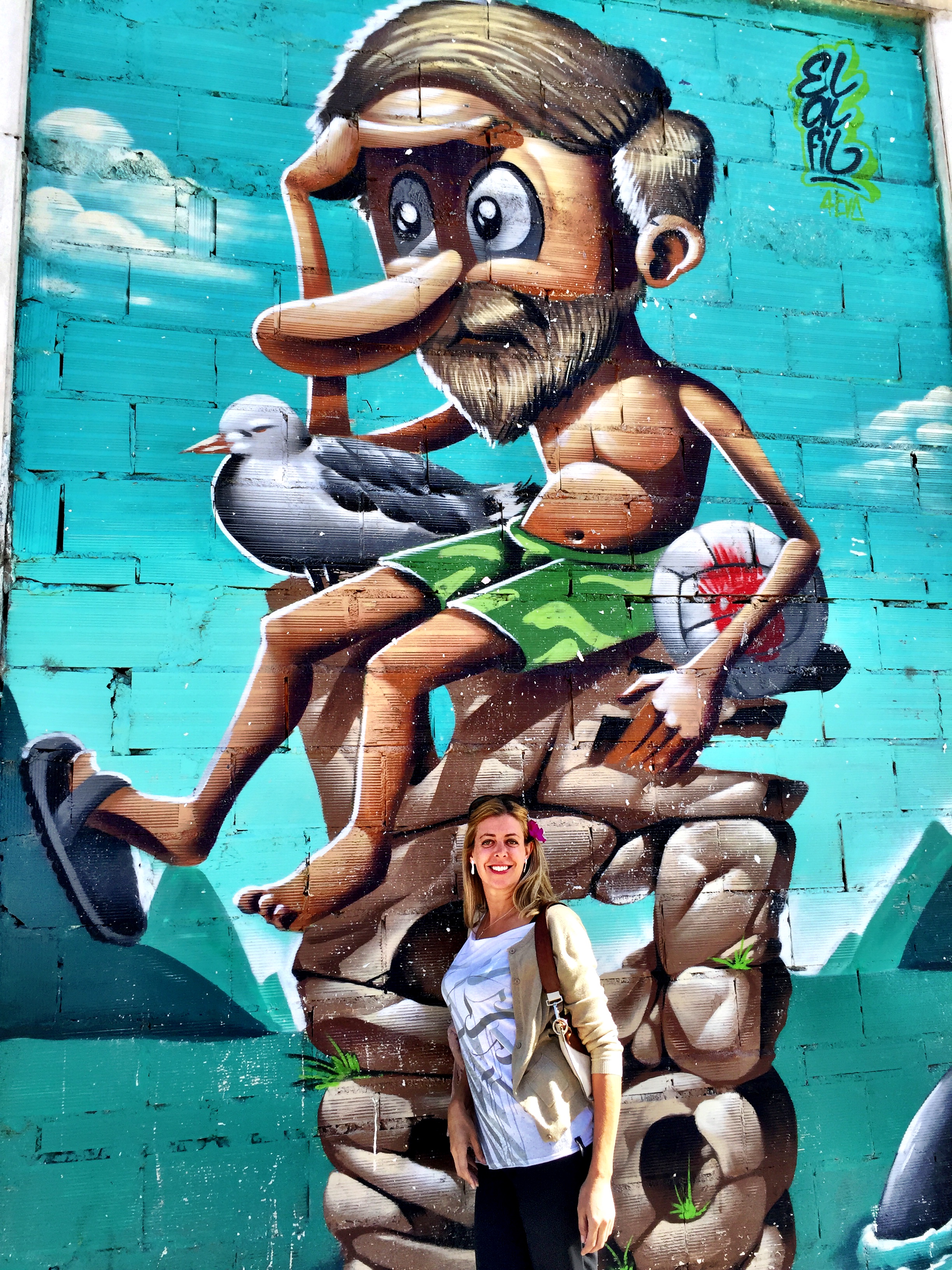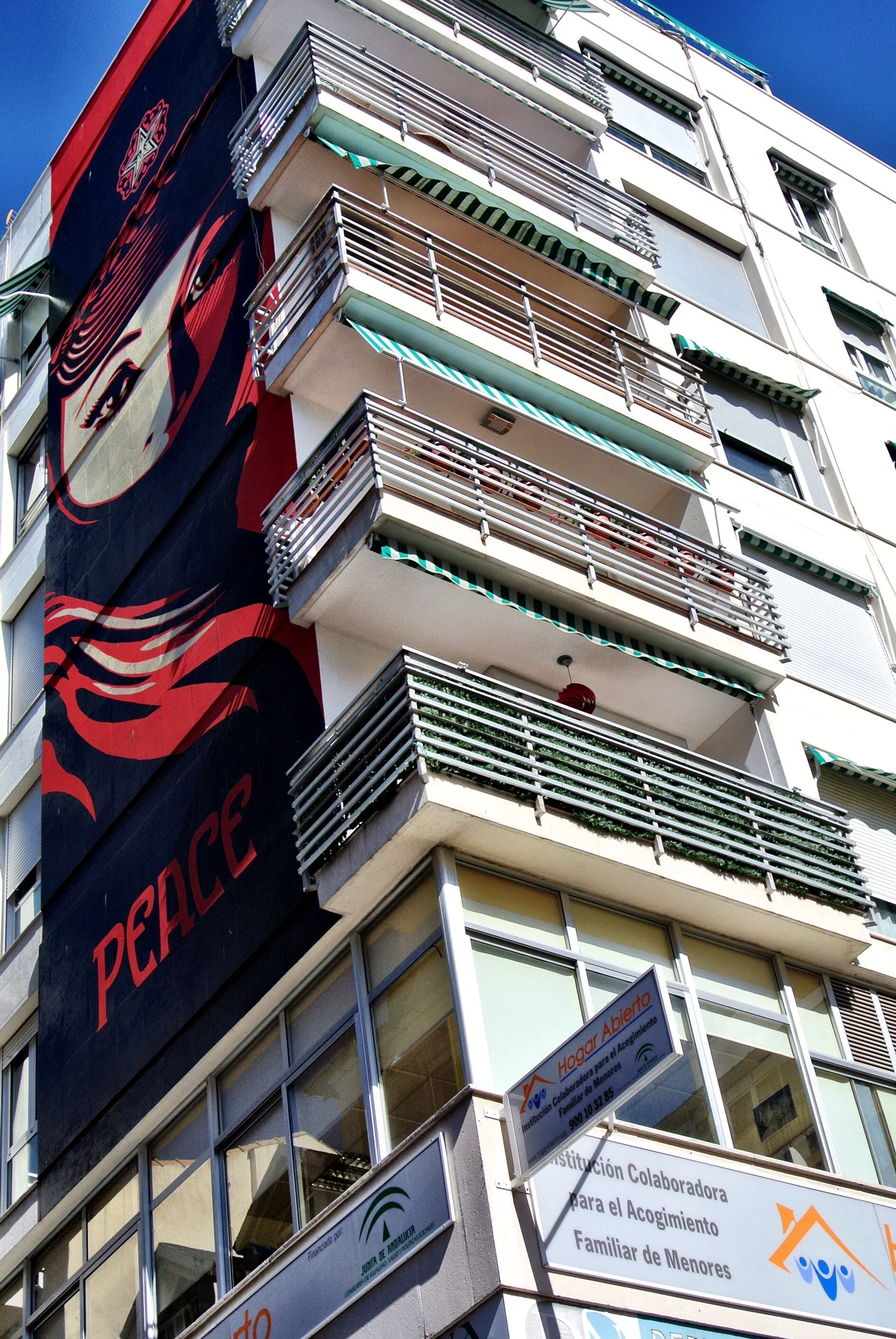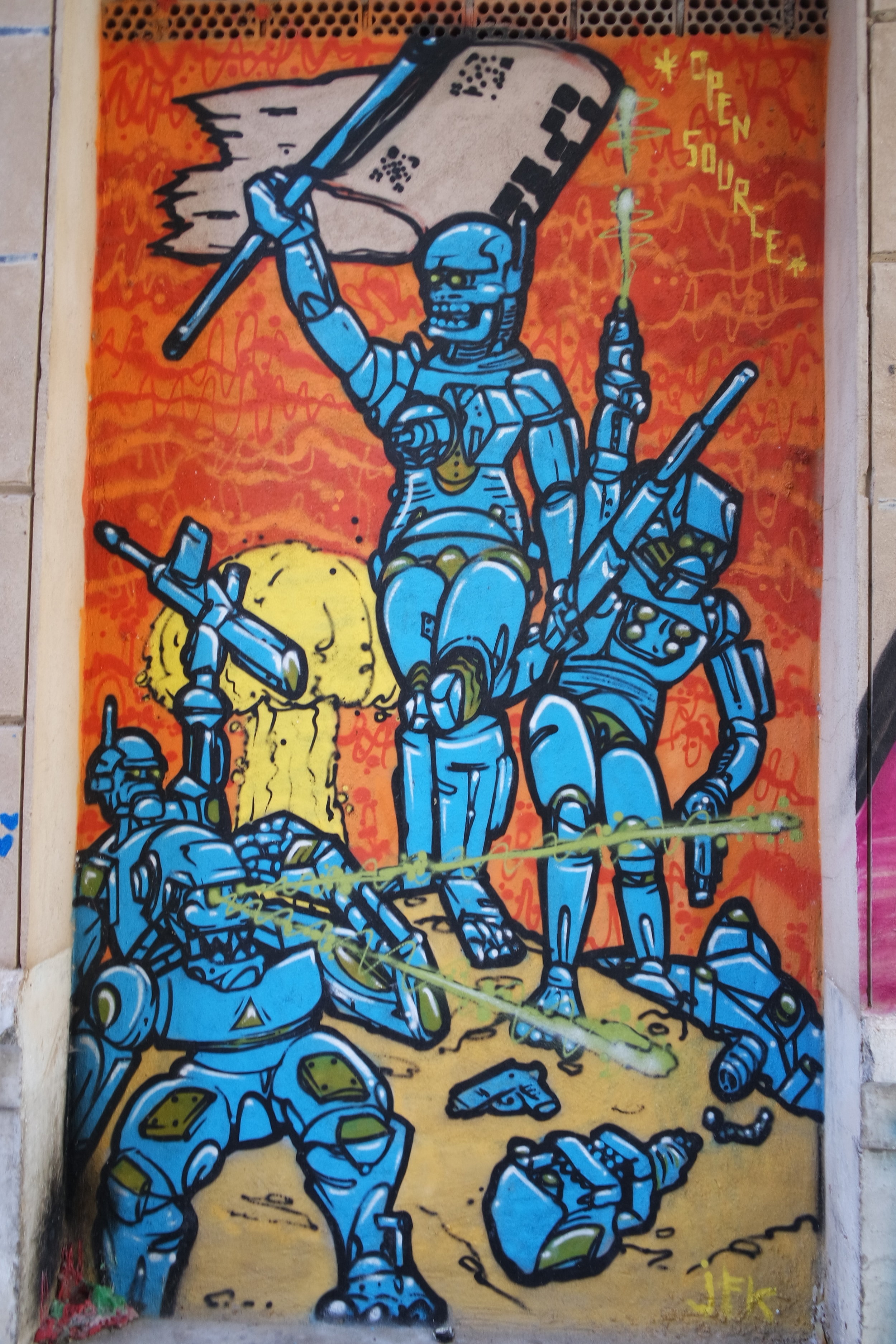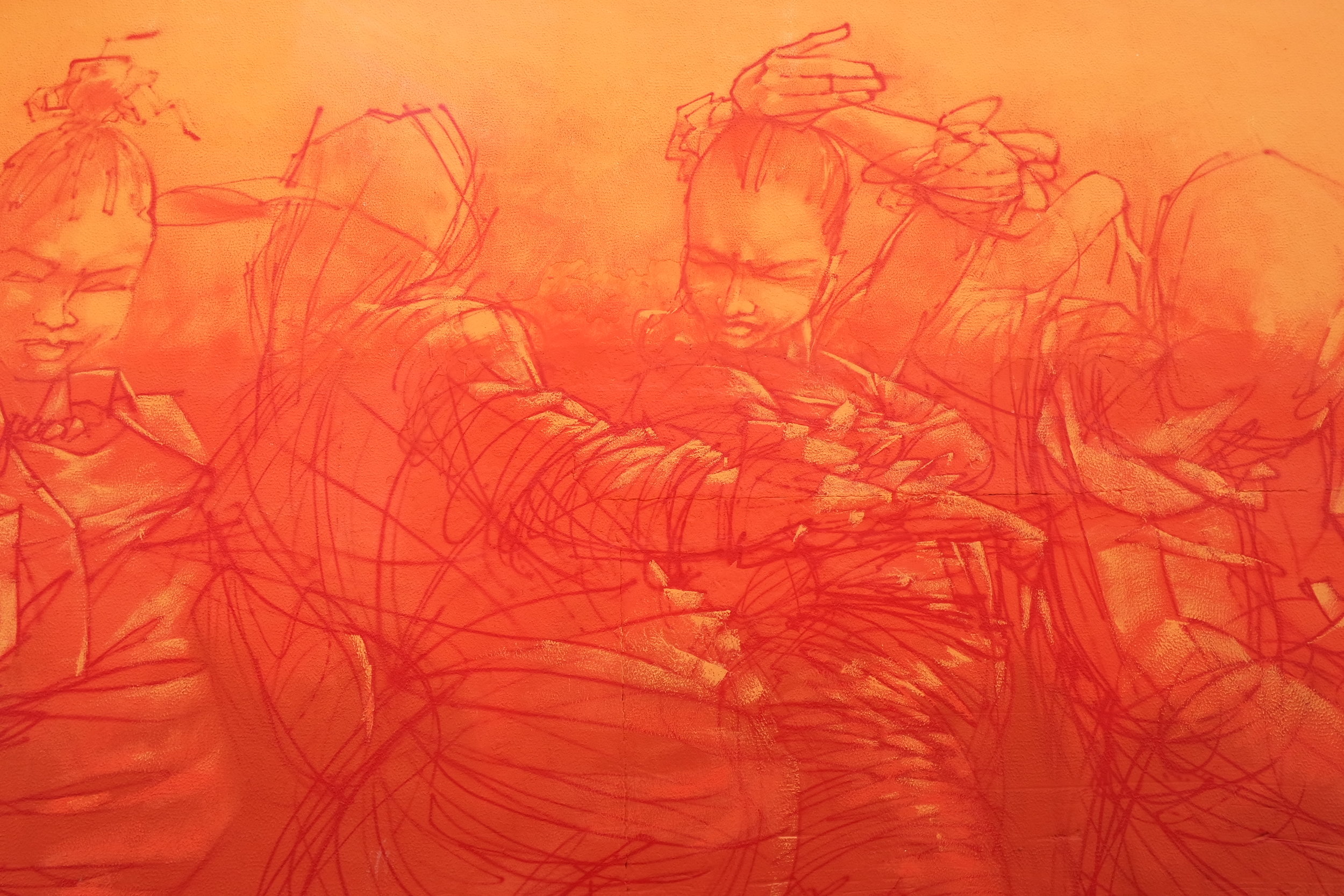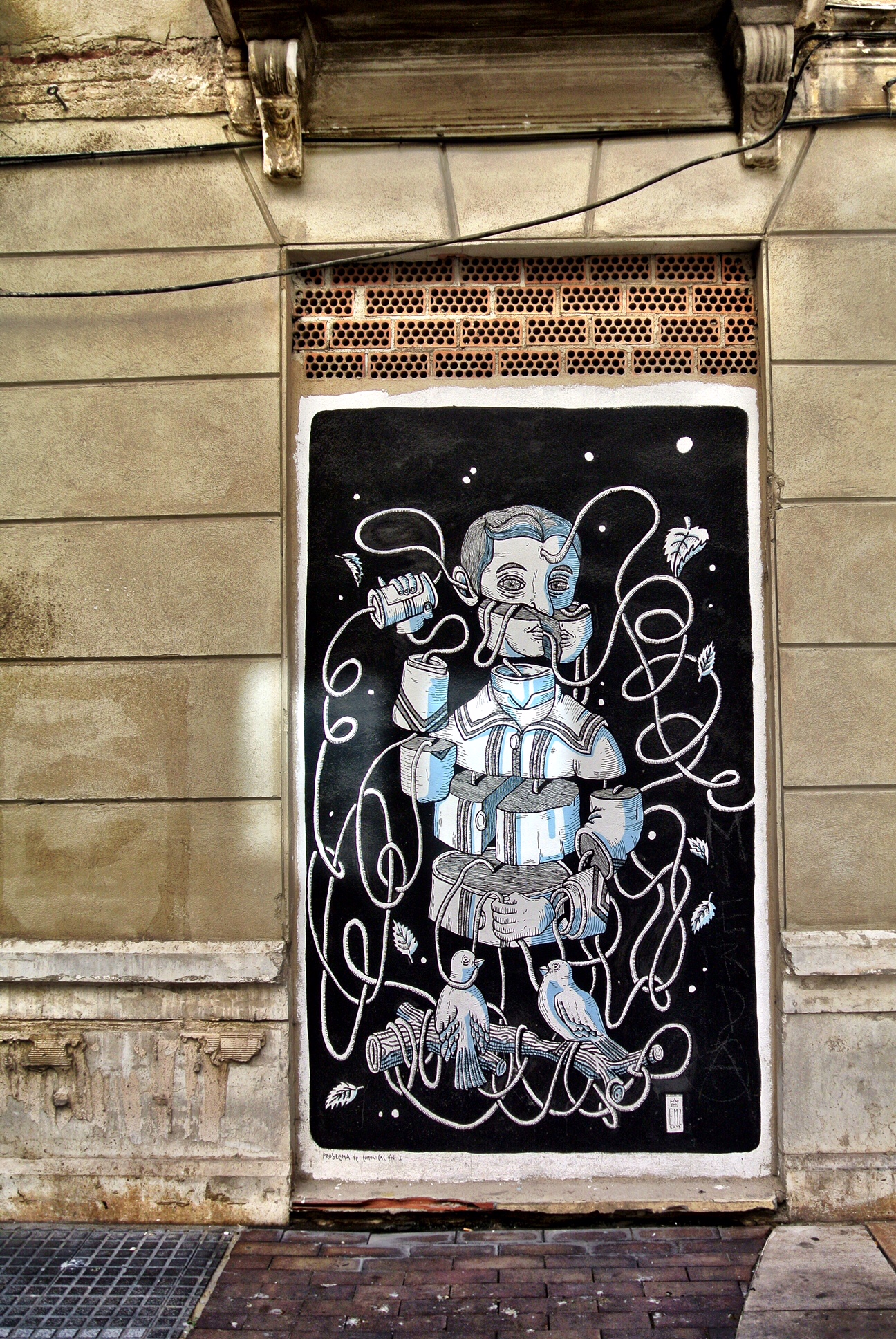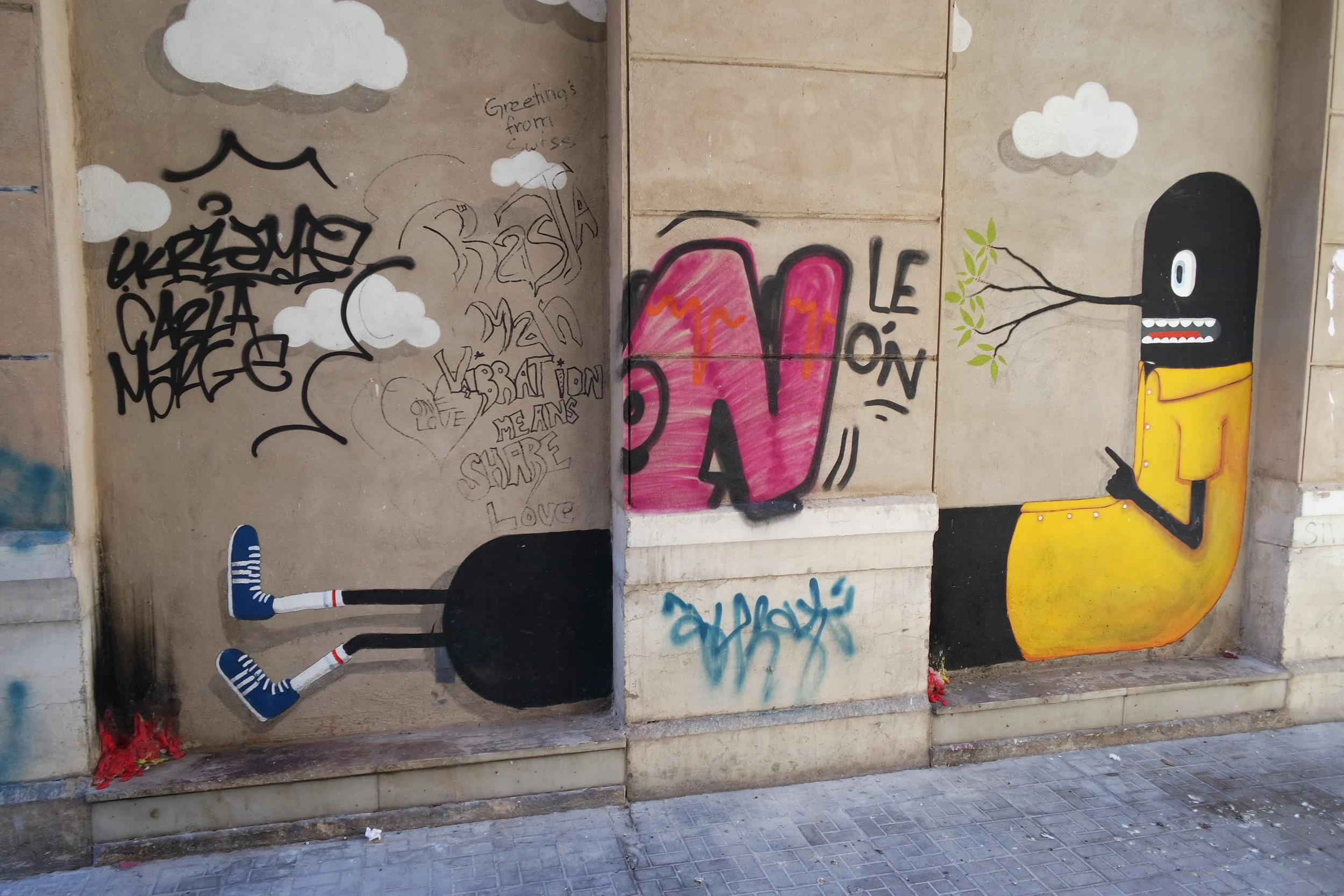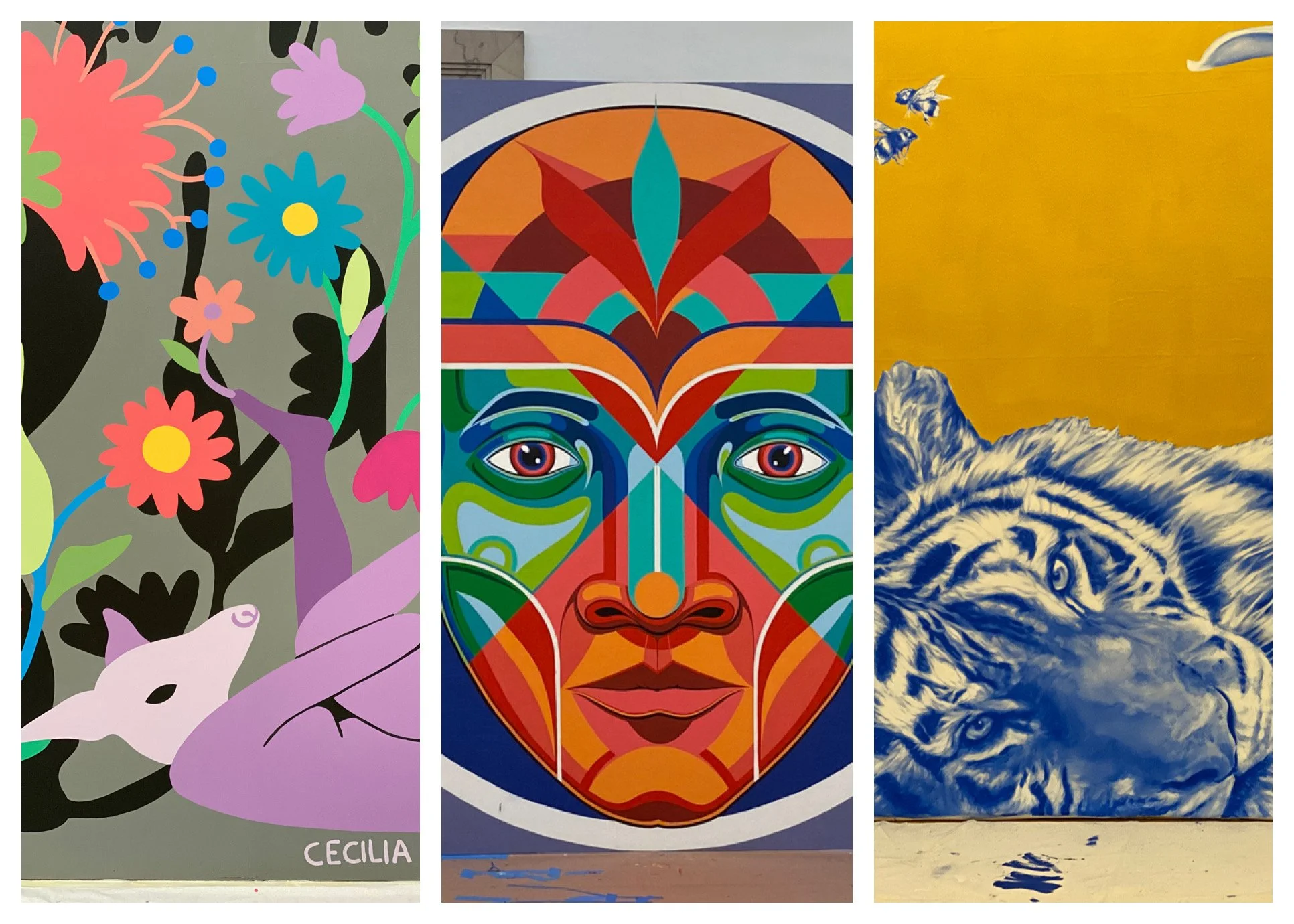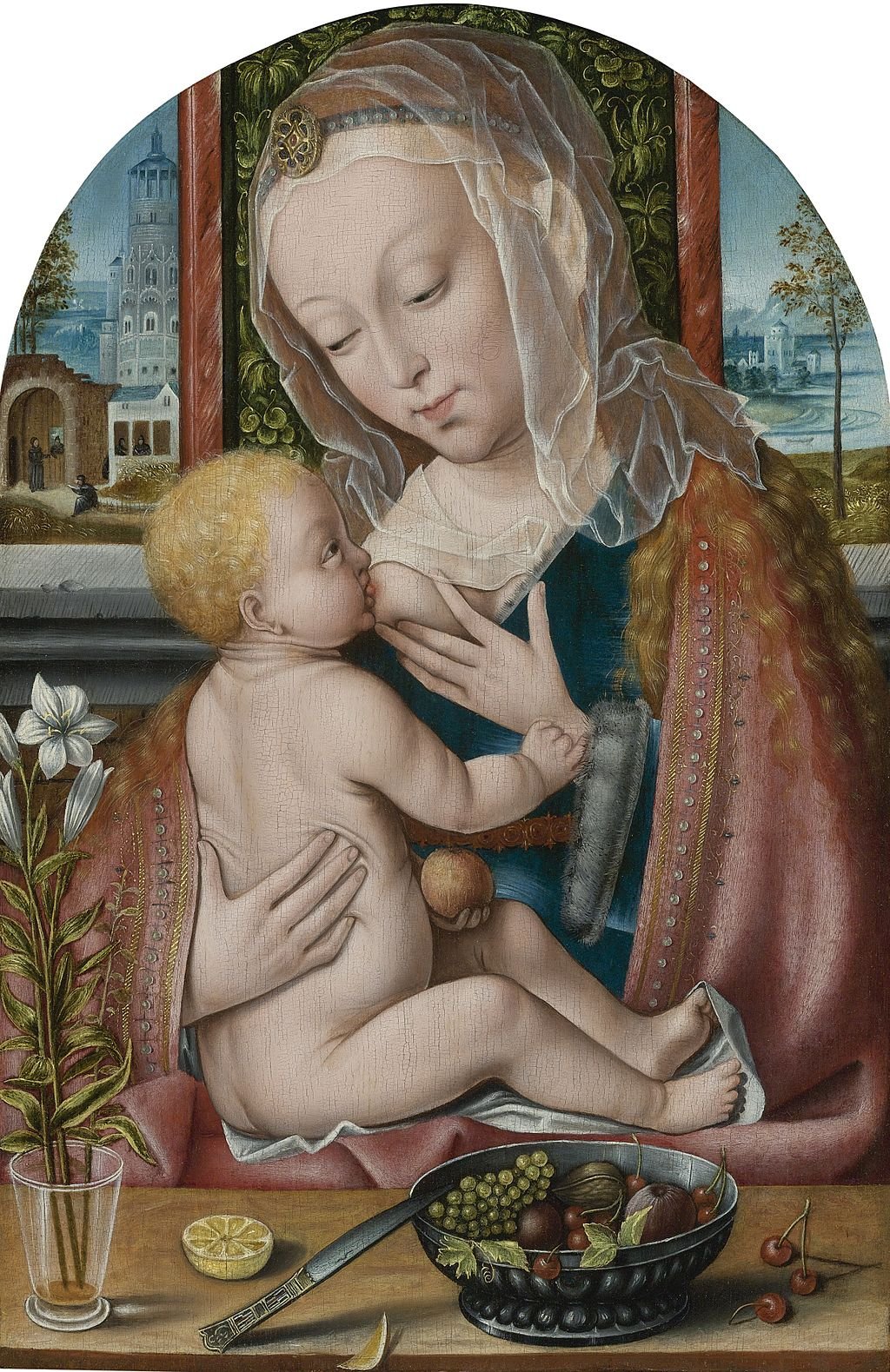I was so taken with Sara’s playful style, I decided to look her up online and email her some questions. Here are her responses. –Duke
What’s your connection to Madrid?
I lived in Madrid for six years and studied fine arts there. Currently, I live in the town of Amantea located in the Calabria region of southern Italy, where I’m one of the organizers of La Garimba International Film Festival, but Madrid will always be in my heart.
In what other cities have you done murals?
I have done murals in Madrid, Málaga, Amantea and San Vito dei Normanni, Italy.
Who are your favorite artists?
I like a lot of different artists. At the moment. I’m obsessed with Rubens. And after seeing the exhibition of Bosch at the Prado Museum, I’m equally obsessed with him. I already admired his work, but after seeing his paintings, I feel that I could spend hours looking and discovering new characters and demons.
I also love Ludwig Kirchner and a lot of German expressionists.
Many of your pieces feature a rosy-cheeked girl. Is she modeled after anyone?
No. I started drawing the curvy, rosy-cheeked girl when I realized that I wasn’t happy with the way society treated women. So she is my response to societal pressures. She is radiant, happy and doesn’t care about what society expects from her.
What’s the most interesting story you’ve had creating a mural?
I recently created a mural in the Asylum Seeker Center in the town where I live. It was one of the most beautiful experiences I’ve ever had. I drew on two big walls, and some of the refugees helped me. The mural was part of a project organized by La Guarimba called Cinema Ambulante.
We currently have more than 80 refugees living in a camp, and our goal is to help them integrate into the local community.
What’s your creation process?
I usually wake up in the morning, have a cup of coffee and put myself to work. I take a look at my notebook and begin working on a specific idea.
What inspires you?
Everything. What happens to me during the day, what I think or feel and, of course, music.












